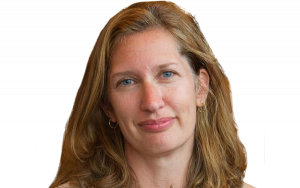Analysis: We Reviewed the School Reopening Plans for 106 Districts Around the Country. Here’s How They Square With Reality

After tracking and detailing school systems’ reopening plans for months, and identifying a range of best practices and improvements from the spring, our research at the Center on Reinventing Public Education now turns to how districts are translating their plans into action.
Perhaps as to be expected, districts’ already lackluster plans for the start of school have been beset by execution challenges, confusing and tardy federal guidance, and barriers to student access. School system leaders have had to navigate all these hurdles before they can address what should be their primary focus: the actual quality of instruction.
In the early days of the pandemic, with the nation on lockdown and schools forced to shutter with little notice, the prevailing theme was grace. Parents tended to forgive school systems for glitches or a lack of support for their students. States were loath to impose harsh penalties on school systems for providing less instruction than they normally would. And schools generally forgave students who didn’t show up for online classes or turn in assignments.
This fall, that grace period is ending, but many of the problems with remote learning haven’t gone away.
- For the most part, remote learning plans this fall have compensated for inadequate remote learning in the spring by attempting to replicate traditional schedule, curriculum and general instructional practices.
- Early implementation of even the best of these plans is failing to meet student needs and threatening to exacerbate already unacceptable inequalities in public education. Researchers forecast lasting damage to students and our economy, absent significant changes to federal, state and local action.
- Districts are rapidly gearing up to make the move back to in-person learning, but early attempts in New York City and Boston have been foiled by rising virus case counts, demonstrating how unlikely it is that districts will be able to rely solely on in-person learning throughout the school year.
All this says to us that districts need to start getting creative, rather than trying to replicate traditional classrooms online or assuming a return to in-person learning is just around the corner.
To avoid catastrophic results for students, districts need more help and stronger leadership from states and the federal government.
Districts are trying to do what they know to do, remotely
Districts mostly muddled their way across the finish line in the spring, leaving learning to chance in far too many places.
They spent the first part of summer planning for multiple scenarios, preparing school staff to meet the complex new health and safety requirements of in-person learning and managing labor negotiations, all with a dearth of clear guidance on public health, logistics or academic benchmarks from state or federal governments.
Then, come July, most urban districts quickly pivoted to remote learning, forcing them to implement the scenario for which they were least prepared.
Districts thus spent August in a flurry of new planning, focusing on getting devices to students and new information to parents and, in some cases, professional development to teachers. More than half of districts we reviewed (56 percent, or 59 of 106) delayed the start of school.
Knowing they could not afford to rerun this spring in the fall, districts got serious about taking attendance, providing real-time remote instruction and grading student work.

These efforts to re-create standard school days virtually were likely driven by a few factors. Parent feedback indicated many felt the lack of engagement over the spring was unacceptable. Reinstated state regulations require districts to deliver a minimum number of instructional hours and demonstrate student attendance to receive funding. And many states and districts have returned to a semblance of normal grading and course-credit expectations.
Remote learning is still not working for all, even under the best thought-out plans
Connectivity gaps and technology glitches have plagued even the best prepared districts. Miami-Dade Public Schools, which had an early, clear and detailed plan, saw its implementation fall apart. A student hacker brought down the district’s online learning platform on the first day of school, and then its new online provider’s limited bandwidth hampered the start of remote learning, fueling anger among parents and school board members.
As districts across the country report their first round of student enrollment numbers, we are learning that some affluent families are leaving their neighborhood schools altogether. These parents may have gotten fed up with remote learning and enrolled in alternative options they could afford.
In other districts, low-income families have fallen entirely off the map. Los Angeles kindergarten enrollment decline is three times lower this fall (6,000 students) than in years past. These students might be struggling to connect to online classes, or they may have had their lives uprooted due to the pandemic or recent economic hardship.
Perhaps most discomfiting, we see that digital tools, even for students who have a laptop and home Wi-Fi, do not guarantee access to classes. Baltimore City Public Schools, whose 180-page reopening plan leads with racial equity, provides five hours of live instruction a day for all students and offers free in-person learning hubs, still finds students falling through the cracks.
For students who do connect online, the actual learning experience appears incredibly varied. Students are getting more access to live instruction than in the spring (typical plans we analyze set aside about three to four hours a day). What happens during those hours also varies widely. The experience of a remote student enrolled in a self-paced virtual academy, versus a remote student in a live, remote, teacher-led class, versus a remote student livestreaming a live class that a teacher is delivering to other students in person, are all quite different. And these experiences are all dramatically different than that of a student attending school in person, which is disproportionately more likely for higher-income kids.
Districts are returning to in-person as a solution, but unclear that is realistic
Districts we have reviewed appear to be slowly transitioning to in-person and hybrid instruction as health conditions change and remote implementation challenges persist. Twelve of the 106 districts we reviewed (11 percent) opened the year remote but have started transitioning students slowly back onto campuses. Another 34 districts (32 percent) have announced plans to do so by the end of October. Should districts stay the course, this would mean 55 percent of districts reviewed will be in-person by November, up from just 10 percent at the beginning of September.

Eight of these 12 districts are phasing in elementary students first. Three are prioritizing students with disabilities to return, and one is prioritizing English learners. San Antonio’s Northside Independent School District, whose improved health conditions allow it to serve 30 percent of students in person, is inviting back four students groups in staggered succession before opening up remove learning to others interested — students with severe disabilities, English learners, early learners and then academically “at risk” students.
It would be dangerous to assume that a gradual return to physical campuses, by itself, will let schools off the hook for solving the problems inherent in remote learning. For one thing, health risks remain, and surveys show families of color and lower-income families may prefer staying remote even if schools return in-person.
And classrooms, schools or whole districts may revert back if health conditions worsen again. The New York City Department of Education, the first large urban district to resume in-person learning absent state pressure to do so, could still see a return to fully remote learning if virus levels continue to rise. Even districts that feel ready for in-person may find their teachers disagree.
This sobering reality demands new and different action
It is now clear that 2020-21 will extend inequities, learning loss and COVID slide. Some observers project that schools are already losing contact with their most vulnerable and hard-to-reach students, damaging educational progress that they may never recover. The impact on our nation’s labor market, society and Gross Domestic Product could be staggering — just four month’s COVID learning loss is projected to cost the United States $2.5 trillion in future earnings, or 12.7 percent of annual gross domestic product.
There may also be a longer-term impact on school systems. Affluent families who bail on local public schools are potentially blowing holes in district budgets that cannot easily be repaired, and some of these students may not be coming back at all.
It behooves districts to get creative and think about new ways to support students and families. If they don’t, they’ll likely face even steeper budget cuts that hit the most vulnerable school students — who have already lost the most — the hardest.
Plenty of bright spots do exist. Some districts are doing innovative things like providing night classes for their youngest students (Henry County Public Schools, Georgia), launching ambitious partnerships to close the digital divide (Detroit Public Schools and Guilford County Public Schools), offering publicly funded pandemic pods for low-income and vulnerable students (Cleveland Public Schools) and creating strong individualized support plans for students (San Antonio Independent School District).
Parents in other districts should ask why their local school systems aren’t doing these things. And districts everywhere must continue to explore other ways to support students and their families. If not, this pandemic will continue to worsen the divide between haves and have-nots, and could engender a loss of public trust that will not easily be restored.
It would be unfair to lay ultimate blame for these challenges at the feet of school districts. A federal leadership vacuum, combined with conflicting or counterproductive public health guidance from state, national and international authorities, along with an impending budget disaster, have all put local school system leaders in an almost-impossible position.
However, districts won’t get out of it by playing the waiting game. States should take the politics and guesswork out of school reopening by setting clear benchmarks based on the better-late-than-never guidance from the Centers for Disease Control and Prevention. They should work with districts to help them adopt the flexible schedules, individualized support and nuanced assessment systems used in the strongest districts.
The federal government needs to make stronger investments in efforts to close the digital divide and the child care gap that have made remote learning impossibly burdensome for middle- and working-class families.
And state and federal education officials need to help school districts identify disconnected families, and formulate comprehensive strategies to address the learning losses likely to have resulted from the pandemic, which may already equate to an entire school year’s worth of lost learning for children in some states.
State and federal policy need to catch up to the reality that while the grace period for public schools is ending, the pandemic, its disruptions to school as normal and its lasting harm to students and families are likely to continue for the rest of the school year, and likely well beyond.
Robin Lake is director of the Center on Reinventing Public Education at the University of Washington Bothell. You can find her on Twitter @RbnLake.
Bree Dusseault is practitioner-in-residence at the Center on Reinventing Public Education, supporting its analysis of district and charter responses to COVID-19. She previously served as executive director of Green Dot Public Schools Washington, executive director of pK-12 schools for Seattle Public Schools, a researcher at CRPE, and as a principal and teacher.
Get stories like these delivered straight to your inbox. Sign up for The 74 Newsletter

;)

